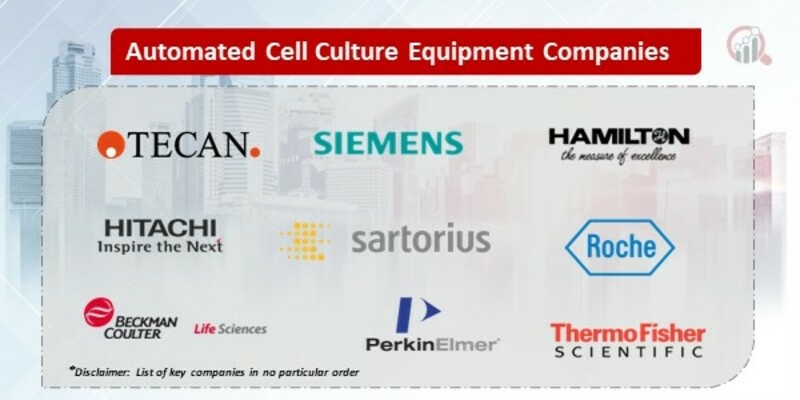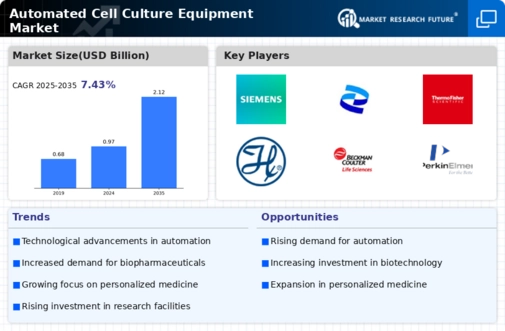Top Industry Leaders in the Automated Cell Culture Equipment Market
 Latest Automated cell culture Companies Update
Latest Automated cell culture Companies Update
-
September 2023: Waters Corporation unveiled novel bioprocess walk-up solutions that aim to enhance the efficiency of biologic sample preparation and analysis. The novel technologies facilitate the acceleration of upstream bioprocess development by up to six weeks compared to existing approaches, as they eliminate the necessity of sending bioreactor samples to a central laboratory for examination. The integration of updated Waters OneLab™ laboratory automation software and newly created analytical processes empowers bioprocess engineers to effortlessly get high-quality bioprocess and medicinal product data. Waters has developed a comprehensive bioprocess walk-up solution by integrating its BioAccord™ liquid chromatography-mass spectrometry (LC-MS) equipment with the Waters Andrew+™ robot through the implementation of novel protocols in the OneLab software. This integration facilitates a seamless and user-friendly experience for bioprocess applications.
-
August 2023: a collaboration between Sartorius and Repligen resulted in the introduction of an integrated bioreactor system. This system combines the Repligen XCell® ATF upstream intensification technology with Sartorius' Biostat STR® bioreactor. According to both firms, the objective is to streamline the processes of increased seed train and N perfusion deployment for biopharmaceutical producers. The Biostat STR has been enhanced with an embedded XCell ATF hardware and software module that is completely compatible. This module provides predefined advanced control recipes along with integrated Process Analytical Technology. This system provides users with an efficient method for regulating cell growth and enhancing cell retention in perfusion operations, eliminating the need for a distinct cell retention control tower. Furthermore, the integration of the XCell Controller hardware and software into the Biobrain® automation platform enables users to optimize the utilization of facility space by reducing the footprint of equipment.
List of Automated cell culture Key companies in the market
- Automated Cell Culture Equipment Market Overview
- COVID19 Analysis
- Market Dynamics
- Value Chain Analysis
- Automated Cell Culture Equipment Market Segmentation
- Regional Analysis
- Competitive Landscape
- Recent Developments









